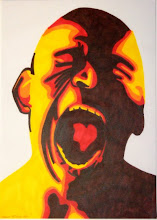as a film of "Memory"

(Notably shorter as it is an edited 'exam response' to the broad academic question: "Please analyze the opening scene of Roberto Rossellini's (episodical sextuplet) film Paisà (the newsreel segment) and discuss it, paying specific attention to its relation to André Bazin's idea of "realism" and also David McDougall's article "Transcultural Cinema: Films Of Memory"...)
In crafting his opening for this disguised fictional film, Rossellini employs historical reference as well as a reliance on photographic iconography (the highly recognizable image of the 'wartime newsreel') to achieve a notion of realism necessary in driving the action and thesis of his film. The opening footage automatically assigns a reconstructive "memory" that gives validity to the rest of the film, offering, quite bluntly, a purely visual or 'lexical' representation of memory that is quite direct. What is lacking is the expressionism or dialectic strategies of montage cinema, which Rossellini puts at bay, in favour of the "realism" that is well defined by Bazin.
David MacDougall, in his article on *Film as Memory, states that "films condense such multidimensional thinking into concrete imagery, stripping the representation of memory of much of its breadth and ambiguity." It then seems certainly that in Paisà, the opening 'Florence episode' evidently wields the heavy influence of memory in it's conventional, accessible mode (that is, one of journalistic hubris,) in order to smoothly meld an ambiguous psychological phenomenon with the clarity of representation modeled within Bazin's cookie-cutter of "realism." By simply streamlining conscious and subconscious human thought into an organized temporal progression, first with the 'reel,' and then with the film's clear and informative dialogue coupled with the historical accuracy of the mise-en-scene and the heightened drama of the music (par excellence), and even the occasional Rules Of The Game depth of field with simultaneous action detectible within the frame, Rossellini achieves his "easy influence" through the weak but successful use of his notably "easy opening."
*David MacDougall, Transcultural Cinema: Films of Memory

No comments:
Post a Comment